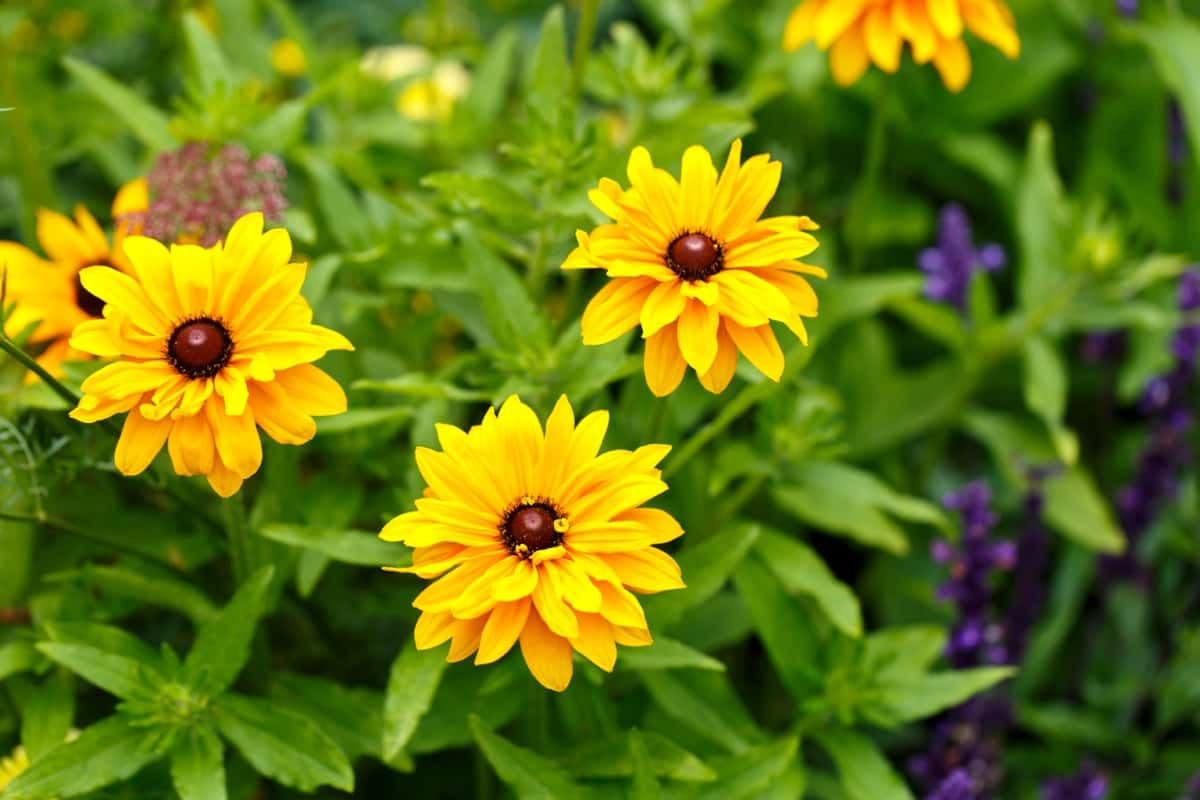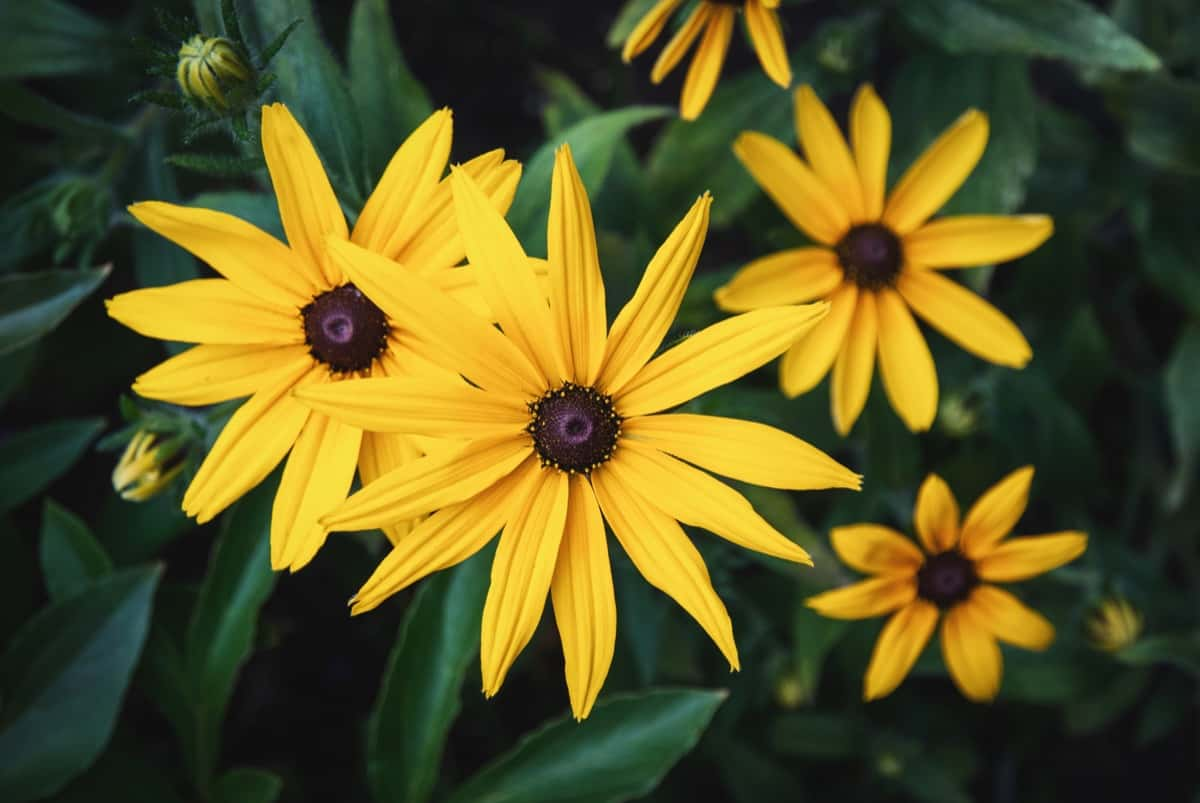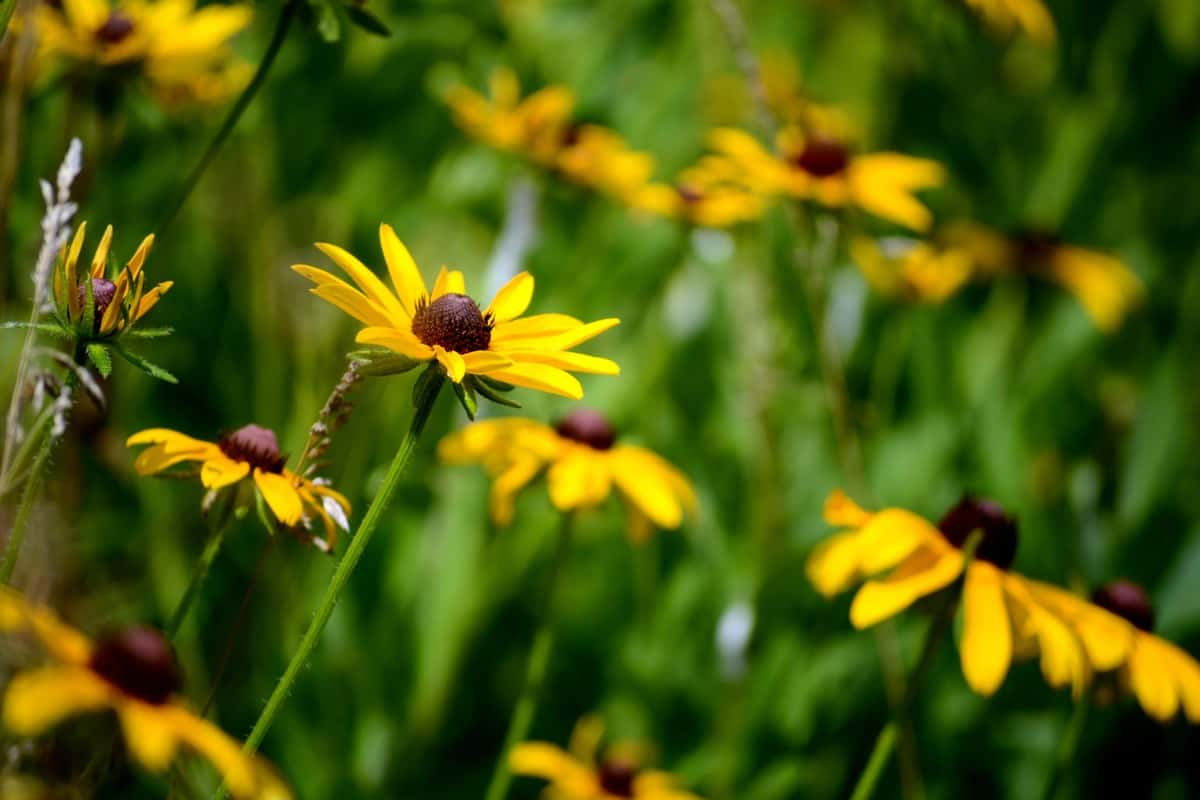Gardeners and landscape designers love black-eyed Susans because of their vibrant yellow flowers. There are several reasons why your black-eyed Susan may not be producing blooms. It is, fortunately, possible to alleviate them by identifying the actual cause and optimizing the conditions. Discover how you can fix the problem by reading on.

8 Reasons Why Your Black-eyed Susan Flowers Aren’t Blooming
Environmental Conditions
Temperature: High temperatures can cause the plant to wilt and lose its flowers. To prevent this, You can also provide some extra shade by using a shade cloth or planting taller plants nearby to provide some natural shade.
Soil Quality: The soil quality in which Black-eyed Susan grows is important for its healthy growth and blooming. The soil should be rich in organic matter, well-drained, and have a pH between 6.0 and 7.5. Add compost or aged manure to improve the soil’s quality if it lacks organic matter.
Watering: Black-eyed Susan needs regular watering, especially during hot and dry weather. However, overwatering can cause root rot and impact the plant’s blooming. To prevent this, water the plant deeply once a week and make sure the soil is dry before watering again.
Pest and Diseases: Pests and diseases can also hinder the blooming of Black-eyed Susan. The plant is prone to aphids, spider mites, and powdery mildew. Organic pest control methods like neem oil, insecticidal soap, and companion planting can prevent pest infestations and keep plants healthy.
Insufficient Sunlight
Black-eyed Susans are native to the plains regions of the United States, so they are used to the hot, sunny, and sometimes dry conditions associated with those regions. If you have a sunny place for them to enjoy, keeping them in that spot as they thrive in full sun would be best. In the absence of sunlight, photosynthesis and food production that is necessary to support plant growth and flower production would be hindered. Planting next to a wall or divider may not receive any sunlight due to its location.
The plants can tolerate partial sun, but you will not get as many blooms, and you may have a shorter growing season. Keep this in mind when planning where to place these flowers, especially perennial varieties. As well as doing well in the garden, these flowers also look great in containers. The plants should do very well in a pot if you don’t have a full sun spot in your garden, but if you could place a pot on your patio or deck, they should also be able to thrive there.
Soil Quality and Nutrient Deficiencies
Poor soil can indeed cause a Black-Eyed Susan vine not to bloom in the spring. This vine thrives in warm, moist, and well-drained soil with little to no competition from weeds. Ideally, the soil should be sandy and slightly acidic, around a pH of 6. Add compost to the soil and add about two to three inches of organic mulch to moisten the soil. There is also the possibility of the Black Eyed Susan vine becoming stressed because of dry soil.
Ensure that the soil in which the vine is growing is not wet or dry daily. In the case of fertilizer that gives too much nitrogen, the blooming process can be halted, and leafing can be promoted. The best fertilizer for bloom-boosting is rich in phosphorus, such as 15-30-15. It is better to avoid those fertilizers that contain a lot of nitrogen, commonly identified as “urea” on the fertilizer package. You can also use bone meal on your Black Eyed Susan vine to help it bloom.
In case you missed it: Dark Delights: The Enchanting Top 20 Black Flowers with Names

Improper Watering Practices
Watering your Black-eyed Susan plants too much or too little can negatively affect the formation of their flowers. Overwatering can lead to root rot, preventing the plant from having enough energy to produce flowers. Meanwhile, underwatering can cause the plant to go into survival mode, prioritizing survival over producing flowers.
To avoid hindering the formation of Black-eyed Susan flowers, it’s important to water them correctly. The best way to do this is to water deeply and infrequently. This means watering the plants until the soil is moist to a depth of around 6 inches and then waiting until the soil has partially dried out before watering again. It’s best to water them early in the morning so the leaves have time to dry before the sun is at its strongest.
Insect Pests and Diseases
- Aphid: These small insects feed on the plant’s sap and cause stunted growth and distorted leaves. You can introduce natural predators like ladybugs to the garden to prevent aphids or use insecticidal soap.
- Whitefly: These tiny insects can cause yellowing of the leaves and stunt growth. To prevent whiteflies, you can introduce natural predators like lacewings to the garden or use sticky traps.
- Powdery Mildew: It appears as a white or gray powdery coating on the leaves. To prevent powdery mildew, you can water the plants at the base, avoid overhead watering, and remove any infected leaves.
- Root Rot: It can be caused by overwatering and poor drainage. To prevent root rot, ensure the soil is well-draining and avoid overwatering.
Lack of Pollinators
The impact of the lack of pollinators on Black-eyed Susan flowers can be seen in the reduced number of flowers produced. Without pollinators, the flowers may not be able to reproduce and produce seeds, which can significantly impact the plant’s overall health and survival. To address the decline in pollinators and its impact on Black-eyed Susan flower production, it is important to take steps to protect and restore pollinator habitats. This can include planting native flowers and other plants that provide pollinators food and shelter, reducing pesticide use, and preserving natural areas that provide habitat for these important species.
Overcrowding
Overcrowding and competition for resources among Black-eyed Susan flower plants can significantly impact their growth and development. As these plants grow and mature, they require access to essential resources such as nutrients, water, and sunlight. However, when there are too many plants in a particular area, they may not have enough space or resources to thrive.
Giving Black-eyed Susan plants plenty of space to grow is important to prevent overcrowding and resource competition. This can be achieved by spacing plants out when planting or by thinning out crowded areas as needed. Additionally, providing plants with adequate water and nutrients can help ensure they have the resources they need to thrive.
Maturity of Black
Black-eyed Susan plants typically reach maturity within 60-90 days after planting. At this point, the plants will have developed a strong root system and will begin to produce buds. Flowering usually begins mid-summer and continues until the season’s first frost.
The maturity of Black-eyed Susan plants can be determined by the height of the stem and the number of flowers that have bloomed. The plant will likely mature if the stem is tall and sturdy and multiple flowers blooming. However, if the stem is short and there are only a few flowers, the plant may not be fully mature.
In case you missed it: Shades of Darkness: Exquisite Black Rose Varieties

Conclusion
Black-Eyed Susans are a favorite among backyard gardeners for several reasons. It is relatively easy to grow, there are many colors to choose from, and they can have a long growing season if grown properly. With this highly productive, cut-and-come-again flower, you can be sure it will continue to bloom for you at least several times a year if you follow a few simple steps.
- Feed Your Flock for Less: Top 10 Tips to Save on Chicken Feed
- Ultimate Guide to Ossabaw Island Hog: Breeding, Raising, Diet, and Care
- Hatching Answers: The Top 10 Reasons Your Chickens Aren’t Laying Eggs
- Eggs and Economics: Breaking Down the Cost of Raising Backyard Chickens
- Defend Your Greens: Proven Methods to Keep Iguanas Out of Your Garden
- Ultimate Guide to Cinnamon Queen Chicken: A Comprehensive Guide for Beginners
- Ultimate Guide to California Tan Chicken: Breeding, Raising, Diet, Egg-Production and Care
- Ultimate Guide to Marsh Daisy Chicken: Breeding, Raising, Diet, and Care
- 10 Types of Chicken Farming Businesses You Can Start for Profits